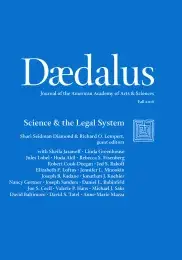Certainty & Uncertainty in Reporting Fingerprint Evidence
Everyone knows that fingerprint evidence can be extremely incriminating. What is less clear is whether the way that a fingerprint examiner describes that evidence influences the weight lay jurors assign to it. This essay describes an experiment testing how lay people respond to different presentations of fingerprint evidence in a hypothetical criminal case. We find that people attach more weight to the evidence when the fingerprint examiner indicates that he believes or knows that the defendant is the source of the print. When the examiner offers a weaker, but more scientifically justifiable, conclusion, the evidence is given less weight. However, people do not value the evidence any more or less when the examiner uses very strong language to indicate that the defendant is the source of the print versus weaker source identification language. We also find that cross-examination designed to highlight weaknesses in the fingerprint evidence has no impact regardless of which type of conclusion the examiner offers. We conclude by considering implications for ongoing reform efforts.
The study of fingerprints began in a serious way with Francis Galton’s book Finger Prints in 1892.1 For more than a century, fingerprint results were treated by the forensic science community (and the courts) as infallible, or nearly so. In 1985, an authoritative FBI manual stated, “of all the methods of identification, fingerprinting alone has proved to be both infallible and feasible.”2 In a 2003 segment on the television news program 60 Minutes, the head of the FBI’s fingerprint unit said that the probability of error in fingerprint analysis is 0 percent, and that all analysts are and should be 100 percent certain of the identifications that they offer in court.3 Such hyperbole is unscientific and unsustainable. As it turned out, just a few months after this program aired, the FBI was forced to admit that its top fingerprint examiners matched a print to the wrong person in the investigation of the 2004 Madrid train bombings, one of the highest profile fingerprint cases in history.4 . . .
Access the full issue here.
